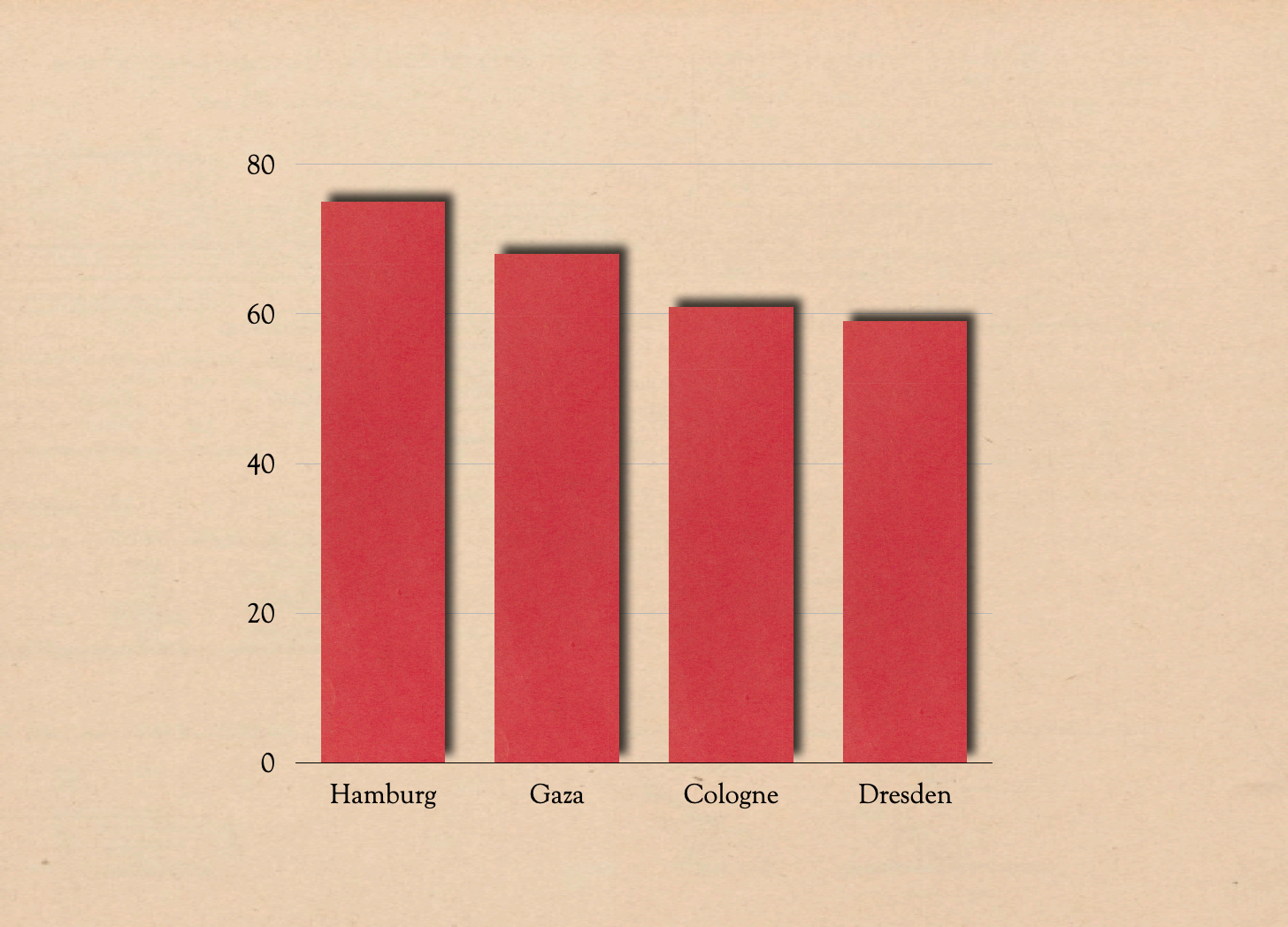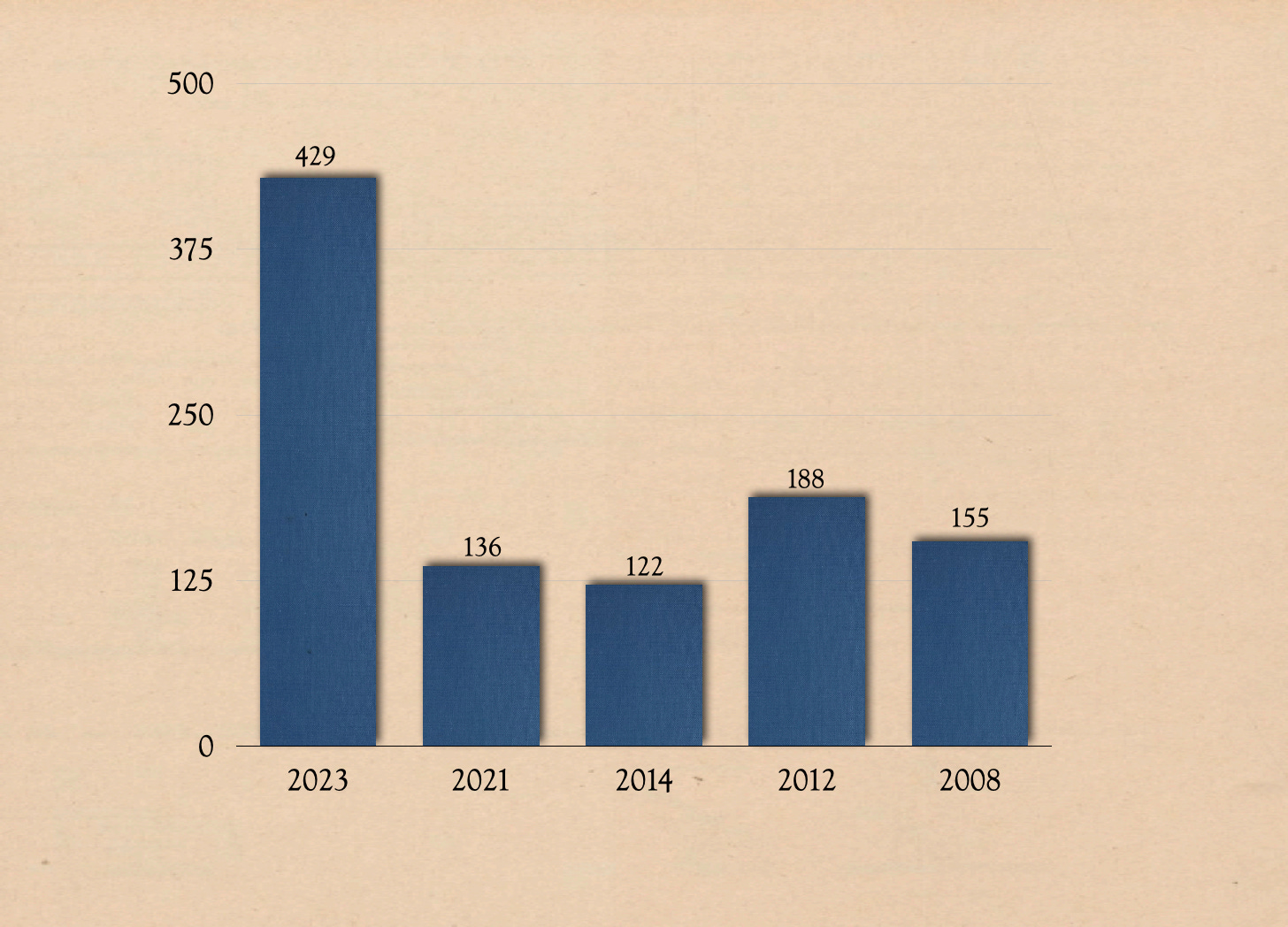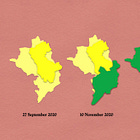Repurposing Precision
Reflections upon the bombing of Gaza
Writing in Fire for Effect, B.A. Friedman explains how a targeting system that had previously been used for “mow the grass” punitive bombardments in Gaza has, since 7 October 2023, been employed to conduct a bombing campaign on a much grander scale. In telling this tale, he condemns the folly of replacing non-linear, human-centered, front-focused, custom-tailored, tactics with a “a mechanical process of servicing targets.”
The following riff upon Major Friedman’s case begins with the claim that the increase in the quantity of munitions dropped changes the character of the war being waged in the ill-starred enclave. That is, when conducted with sufficient intensity, a long series of precision strikes, each delivered for a particular pre-meditated purpose, can work effects like unto those wrought eight decades ago by the blockbusters that tumbled brainlessly out of the bomb-bays of Flying Fortresses.
An oft-reposted infographic, first published in the Financial Times, compares the damage done to buildings in northern Gaza by Israeli munitions between 5 October and 4 December 2023 to the destruction of real property caused by Anglo-American bombs that fell upon three German cities during World War II. Based on research carried out by Cory Scher and Jamon Van Den Hoek, this chart characterizes the rubbling of northern Gaza, which lost 68% of its buildings, as less extensive than that suffered by Hamburg (75%), but worse than that inflicted on Cologne (61%) and Dresden (59%).
The similarity in the overall effects of two very different kinds of bombardments raises the question of why the Israelis employed so many precision-guided weapons. After all, replicating the stochastic approach used in the terror bombings of the Second World War could have saved them a great deal of time, trouble, and treasure.
One answer lies in the immediate availability of a system designed to employ precision-guided munitions to achieve less ambitious effects. Thus, rather than replacing that combination of people, practices, and hardware with one optimized for wholesale destruction, the Israelis found it easier to increase the number of strikes of a familiar kind. Indeed, the rheostatic quality of the intelligence-strike complex, which had been designed to give the Israeli Defense Forces the ability to dial up (and dial down) the intensity of more modest programs of precision strikes, meant that the switch from periodic “mowing the grass” to a campaign worthy of Curtis LeMay involved few changes beyond “more of the same.”
Writing in +972 Magazine, Israeli journalist Yuval Abraham provides figures that compare the first five weeks of the bombardment of Gaza in 2023 (7 October 2023 through 9 November 2023) with previous programs of precision strikes. On the one hand, these indicate that the total number of targets struck in the first thirty-five days of the ongoing campaign exceeded, by a factor of ten, the total number of strikes conducted during the punitive operation of 2021. At the same time, they show that the number of targets struck each day in thirty-five days of 2023 is but three times as large as the number of strikes carried out per diem in the eleven days of the previous program of aerial attacks.
Sources:
The figures for the percentage of buildings destroyed come from a study, conducted by Cory Scher and Jamon Van Den Hoek, featured in John Paul Rathbone “Military Briefing: the Israeli Bombs Raining on Gaza” Financial Times 6 December 2023.
The figures for total number of strikes and strikes per day in various Israeli bombing campaigns in Gaza come from Yuval Abraham “A Mass Assassination Factory: Inside Israel’s Calculated Bombing of Gaza” +972 Magazine 30 November 2023.
For Further Reading:











